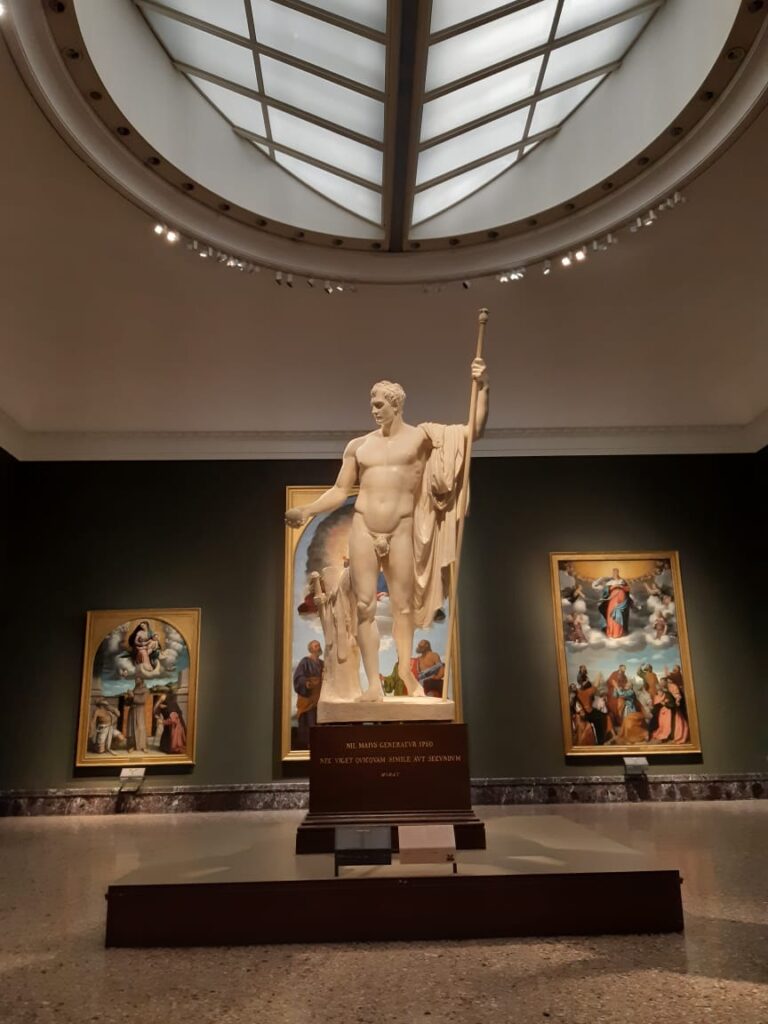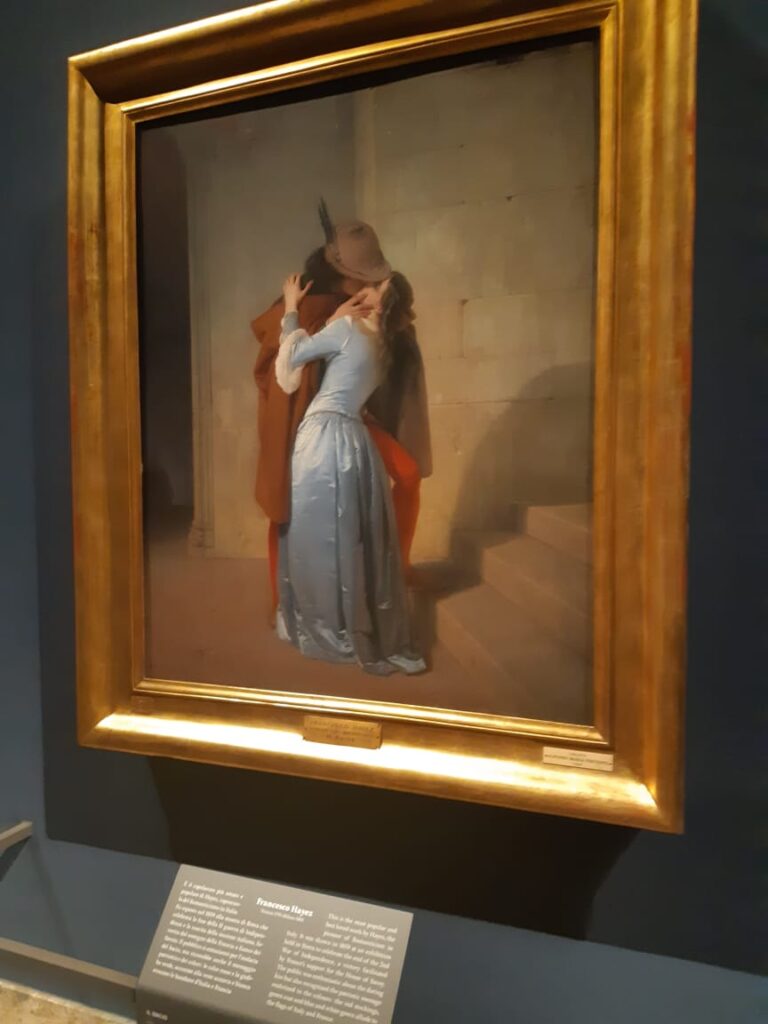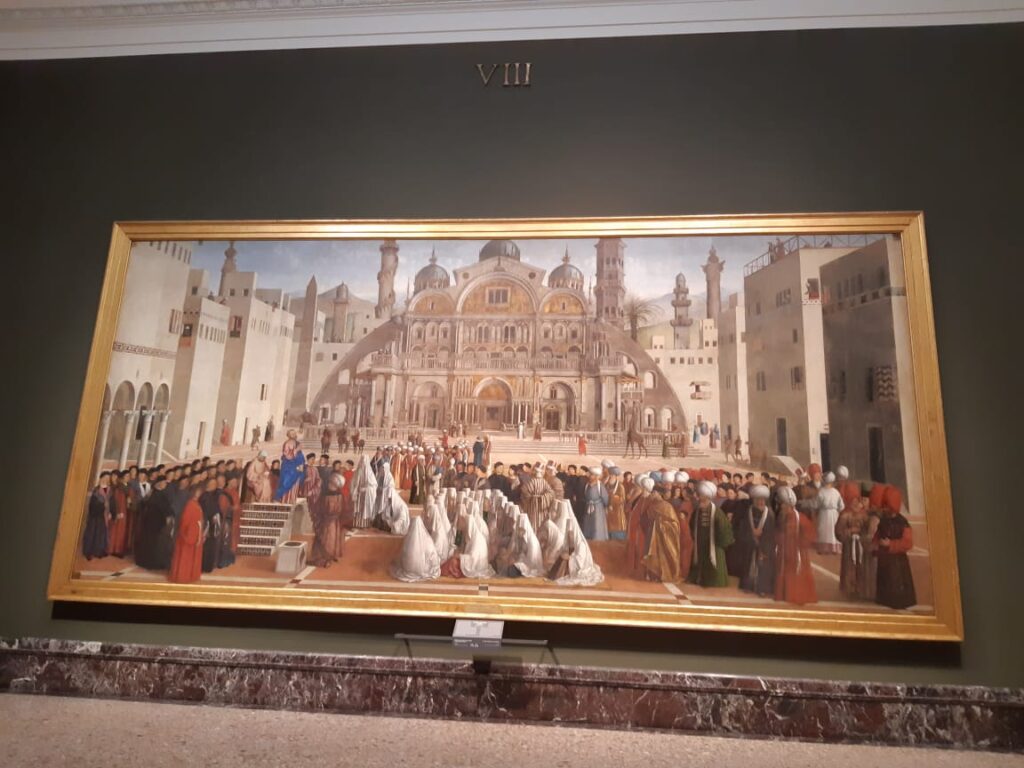by Laura Resende
Among art and history, one of the largest collections of Italian art driven by Napoleon in the center of Milan
In the middle of typically Italian narrow streets, among the cosmopolitan and very globalized city of Milan, we can find the Pinacoteca de Brera. Even though it is in a city with great cultural attractions, with great museums and classic works like da Vinci’s “Last Supper”, the Pinacoteca de Brera remains the most prestigious museum in Milan.
The Palazzo Brera
Its entrance is Palazzo Brera, a building that was built under the reminiscences of a 14th-century monastery. Palazzo Brera was initially occupied and built by the Jesuits, and became the Academy of Fine Arts in 1776, with the Pinacoteca being born from didactic objectives, as a space of examples and models for art students. The Palazzo includes not only the Pinacoteca, but other institutions such as the Academy of Fine Arts, the Braidense Library and the Botanical Garden.
Right at the entrance, the visitor can observe a replica of a nude statue of Napoleon Bonaparte, made by Antonio Canova in 1859 (the original is inside the museum). And why is there a statue of Napoleon in one of the main art institutions in Milan?

Although its origin goes back to the 14th century, Brera became the shelter of great Italian works only under Napoleon’s rule in northern Italy. Unlike many other institutions and museums in Italy, Brera was born as the product of a political decision: under Napoleon’s orders, paintings by countless churches and convents were confiscated throughout the Lombardy region as a way of seeking to build a sense of identity and power for Napoleon’s Empire, whose aim was to build what he called an Italian Louvre.
In this way, the Pinacoteca de Brera is the result of periods of foreign domination under Italy – the Academy of Fine Arts being established with Austrian domination, while the Pinacoteca came with the French one.

Great names in art!
Therefore, the Pinacoteca is considered one of the most important collections of Italian art, with paintings by great Italian names such as Raffaello, Hayez, Caravaggio, Boccioni, Modigliani, Morandi, Bellini, and Martini, and even foreign artists like Picasso, with a religious theme present in most of the paintings. The exhibition is temporally organized along a historical line, starting with great paintings from the 13th and 14th centuries, and reaching to the present day, so that it is possible to follow the changes and evolution in European and Italian art in a very didactic style.

The Museum also aims to be an interactive, and learning place – not just “a place to go on rainy Saturdays”, as described right in its entrance. Thus, in front of many works, there are signs where the visitor can read curiosities and questions that trigger reflections, usually without answers, inviting the public to be the investigator of the work and to actively engage with art – analyzing its time, its message, its elements.

To sum up, considering such reasons, for all lovers of art and history, the Pinacoteca de Brera is a mandatory stop and a great tip for the post-pandemic scenario. For those with more time, it is possible to stay for the night in the neighborhood of Brera, one of the bohemian and prominent spots in Milanese night, with the possibility of having a cocktail and a typical Italian dinner on the corner of the Palazzo. The entire ticket is 10 euros and the reduced one is 7 euros, but in honor of the fight against the coronavirus, the Pinacoteca reopened free of charge until September 2020, respecting social distance rules and requiring online reservation on the Pinacoteca website to control the number of people per hour.
Information
Address:
Via Brera, 28
Operation:
Tuesday to Sunday, from 8.30 to 19.15, with Fridays until 21.15
Tickets:
10 euros (whole) and 7 euros (reduced)
Free admission every first Sunday of the month

Hi, I just read texts on your blog and I became interested in the topic. I like your article and I am thinking whether I could use your words in my work? Would it be probable? If yes, please contact with me. Thank you.
Nice content you got here for your site, any suggestions?
Hi, where did you get this info can you please support this with some proof or you may say some good reference as I and others will really appreciate